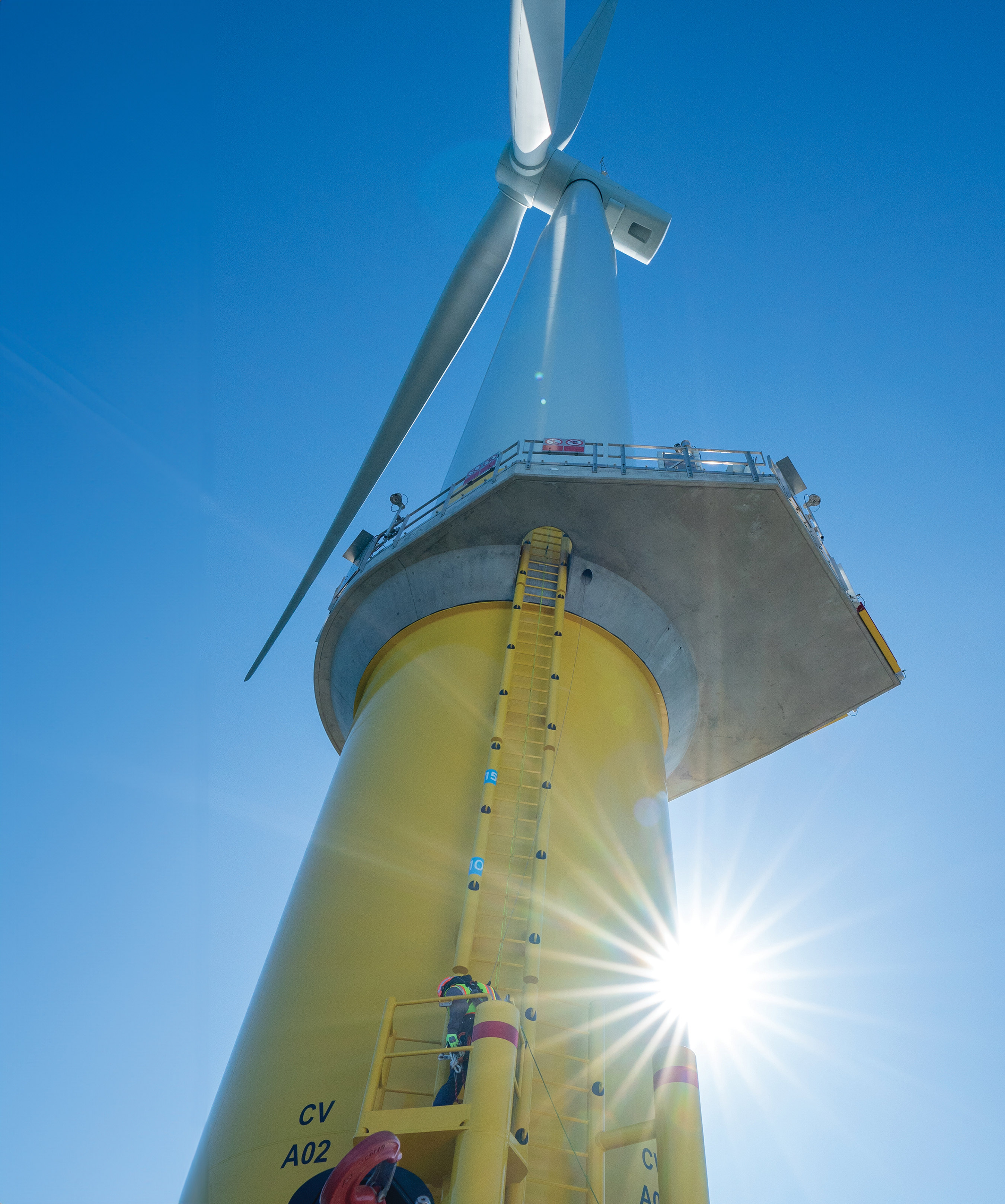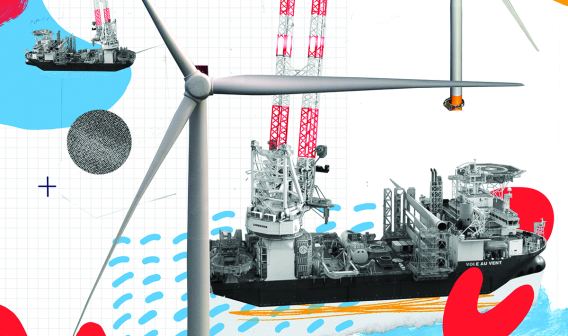
Coastal Virginia Offshore Wind
Foundational Pieces
In the design of CVOW turbines, monopiles are essentially enormous steel tubes that will be driven into the sea floor, forming a base for each turbine. The monopiles are up to 270 feet long, 31 feet across at the widest point, and weigh around 1,500 tons on average. A single oversized shipment will take several days to carefully maneuver and unload. After so many years of planning, their arrival in Virginia is a sign of construction readiness.
“The company and the team members were extremely excited to see the first pieces of equipment coming to Portsmouth Marine Terminal,” said Larson.
The monopiles are huge, so the finished wind turbines will be as well — about 800 feet above the water at their highest point. But the closest towers will be 27 miles from land, far enough from shore to be difficult to see at sea level from land. “That’s one of the things we like about the Virginia wind energy area — it’s so far out that there’s very little visual impact,” said Larson.
From Process to Progress
In September 2023, BOEM released its final Environmental Impact Statement for CVOW, clearing the path for the Record of Decision. “The completion of CVOW’s environmental review is another significant milestone to keep the project on time and on budget,” Bob Blue, chair, president, and CEO of Dominion Energy, said in a statement.
For Dominion, the next steps include onshore infrastructure work through the remainder of 2023. Approval of the Construction and Operations Plan is expected 90 days after the Record of Decision at the end of January 2024. This would permit offshore groundbreaking in May 2024, timed to avoid peak North Atlantic right whale migration. Construction crews will prepare foundations, cables, and other infrastructure over the following year, including installation of the monopiles and transitional tower pieces. Once the turbine foundations are complete, crews will install the towers, nacelles, and blades.
Dominion is currently working with regulators to allow sequential commissioning, to generate power from turbines as soon as they’re capable — the first would be online by late 2025 — rather than waiting for every turbine to be completed. If everything goes to plan, all 176 turbines will be finished and generating power by the end of 2026.
Full operations will be a grand culmination of more than a decade of work, but even larger plans for U.S. offshore wind are in store, with BOEM expected to hold its Central Atlantic lease auction this year.
Virginia is at the center of it all — literally and figuratively. For example, the Virginia Clean Economy Act of 2020 set a target of 5.2 GW of offshore wind power by 2032. CVOW is halfway to that goal. “I believe there’s a robust future for offshore wind on the U.S. East Coast,” Larson said.



